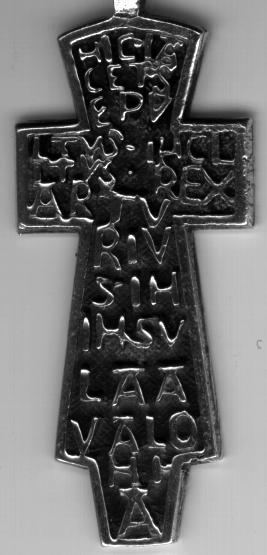

Creation of Texts for Political Aims

. When Geoffrey of
Monmouth wrote "Historia
Regum Britanniae" he probably
used Nennius's unreliable
"Historia Brittonum" and the Welsh
Annales Cambriae as his source
materials. Having added new material of his own invention, the
result was a text many times more unreliable than the sources.
His account of Arthur becoming Emperor was probably inspired by Emperor
Maximianus, described as Macsen
Wledig in "The
Mabinogion". Ironically both
Nennius and Geoffrey include
"Historia" in their titles, but both are historically unreliable.
Geoffrey's date for the Battle of Camlan is AD 542, clearly influenced
by the Annales Cambriae. Why did Geoffrey invent so much new
material? He was probably motivated by a political need to
present a Briton hero whose empire included Normandy. The Normans
were not beneath changing history for their own ends. For
example the bodies of Arthur and Guinevere were "found" at Glastonbury
complete with an inscribed cross (See copy above). Later on
doubts were expressed about the lettering style. Dating
techniques improved but by then the cross was mysteriously
"lost". By "proving" a historical lineage from "Emperor" Arthur,
the Normans could justify their right to rule, while glossing
over their Norse origins. Aspirations for self rule by the Welsh
and the Saxons were undermined. Geoffrey's work became very
popular. Initially being considered as true history it provided
the framework for the Arthurian Legend. Nennius provided the
spark, Geoffrey the ignition.
